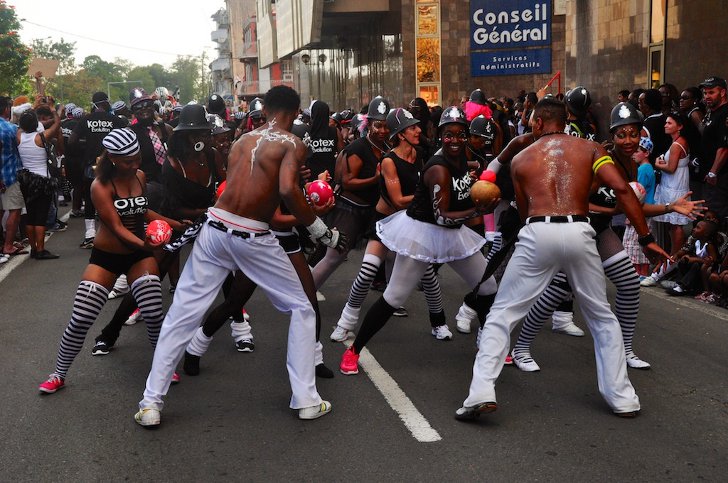The tradition of celebrating Carnival was brought to Martinique by French settlers that colonized the island. The first mentions of the Martinique Carnival date back to the 17th century. Originally there were two separate celebrations. Free and well-off inhabitants of the colony participated in masquerade balls and private banquettes, while slaves and workers had their own celebration. After the abolition of slavery the Carnival became more democratic and adopted its characteristic style.
From 1848 to 1902 Martinique’s Carnival was held in the town of Saint-Pierre. Saint-Pierre was the cultural capital of Martinique, it was often referred to as the “Paris of the Caribbean”. After the total destruction of the town by a volcanic eruption in 1902, the Carnival was halted for two years and then relocated to Martinique’s official capital Fort-de-France.
The Carnival of Martinique begins on the Saturday before Ash Wednesday. The festivities include dances, parties, parades, and other activities. The celebration is presided over by King Vaval and three queens – the Carnival Queen, the Junior Queen, and the Queen Mother. Vaval is a papier-mâché effigy representing a politician, a public figure or an institution.
Most islanders wear elaborate costumes during the Carnival. On Carnival Saturday and Sunday revelers dress up as they please. Monday is the day of Burlesque Weddings. On this day, men traditionally dress in drag. Some wear wedding gowns while others prefer more provocative outfits. Cross-dressing during the Carnival has nothing to do with sexuality. It’s rather a reference to the important role of women in the society and family structure of Martinique. On Tuesday, people dress up as devils.
The Martinique Carnival ends on Ash Wednesday with the burial of Vaval. The effigy is symbolically burnt on a bonfire at nightfall, signaling the end of the festivities and the beginning of Lent.

Photo: Matthew Cowen




